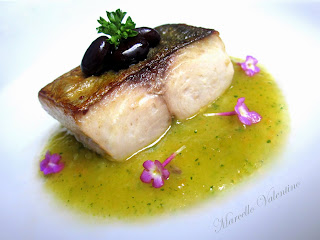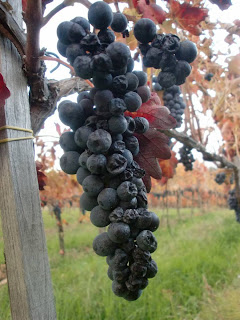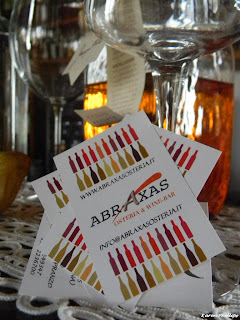Memories that began with a phone call last fall from my friend Manuela Piancastelli. Manuela, along with her husband Peppe Mancini, are the owners of a winery called Terre del Principe located in Castel Campagnano in the province of Caserta. Manuela asked me if I would be willing to help out in their booth during Vinitaly. My knowledge of their winery and their wines would be useful, she said, when non-Italians came to the booth, or during meetings with buyers. It took about 5 seconds to respond in the affirmative. But about 5 months for it to sink in. On the 7th of April, however, I was ready to pour…pour Pallagrello.
Terre del Principe makes wine using 3 grapes that are not widely known; Pallagrello Nero, Pallagrello Bianco, and Casavecchia, so it was an honor to ‘introduce’ these grapes and these wines to a public of journalists, wine enthusiasts, buyers, and importers…Italian and non.
There were seven wines to choose from. Terre del Principe makes two using Pallagrello Bianco. I would start by pouring Fontagnavigna 2010. A white made with 100% Pallagrello Bianco, a white that only spends time in stainless steel. A perfect lead into the next white Le Serole 2010. A white that ferments in French oak barriques. Oak that cuddle without overpowering, giving off light aromas of honey and apple with a touch of toasted almonds on the palate. Next, a rosé…Roseto del Volturno 2010. As I poured this wine, I couldn’t help but enjoy the rose color that emerged from the bottle and into the glass. A rosè made with Pallagrello Nero and Casvecchia…minutes of maceration with the skins to give this amazing color, then vinified as a white. After this rosè, the parade of reds would begin…Castello della Femmina 2009 (Pallagrello Nero and Casavecchia).
Then on to Ambrucco 2008, their red made with 100% Pallagrello Nero, their red recently judged by Decanter Magazine as the top red wine in Southern Italy after a blind taste test of 141 wines. Centomoggia 2008, 100% Casavecchia grape, a wine that Gambero Rosso recognized with their 3 Bicchiere. Both wines spend 12 months in barriques and 12 months in a bottle before they are released
Vigna Piancastelli 2007, a blend of Terre del Principe’s best grapes from their prized vineyard…vigna Piancastelli. 70 % Pallgrello Nero; 10 % is harvested in December so it has extra time to sweeten on the vine. The remaining 30 % is Casavecchia. 12 months in barrique and up to two years in the bottle before released. This one was given the acclaimed 5 Grappoli by AIS (Associazione Italliana Sommeliers), their highest recognition for a wine.
So I poured Pallagrello and Casavecchia. I poured or those who were familiar and those who weren’t. There were those who wanted to try the full range of all 7 wines. Those who wanted the whites-only. Those who wanted the reds-only. Those who would ask for a wine by name. I poured for journalists, Italian and non. For wine enthusiasts, other wine producers, enologists, and sommeliers. For those who were interested, we'd try earlier vintages as well as 'just relaesed'. I attended meetings with buyers and importers from Canada, Singapore, Switzerland, and Poland.
And as I introduced each wine with the basic information on the grape and wine making process, I would sit back and let the wine do the rest. I would observe and let the wine speak, as a wine should do. I would let whites express their freshness, their light aromas, and light acidity. Each red gave would tell its own special story with their rich color, their tannins, their balance, and their potential for aging.
I didn’t need to say much. So I would smile along with those who were discovering Terre del Principe for the first time. I would smile with those who knew their wines well. I would think back to that phone call from Manuela last fall asking me to ‘help out’ during Vinitaly. That request to pour Pallagrello that I am glad I accepted. And an experience that I will never forget.
Italian Version


























